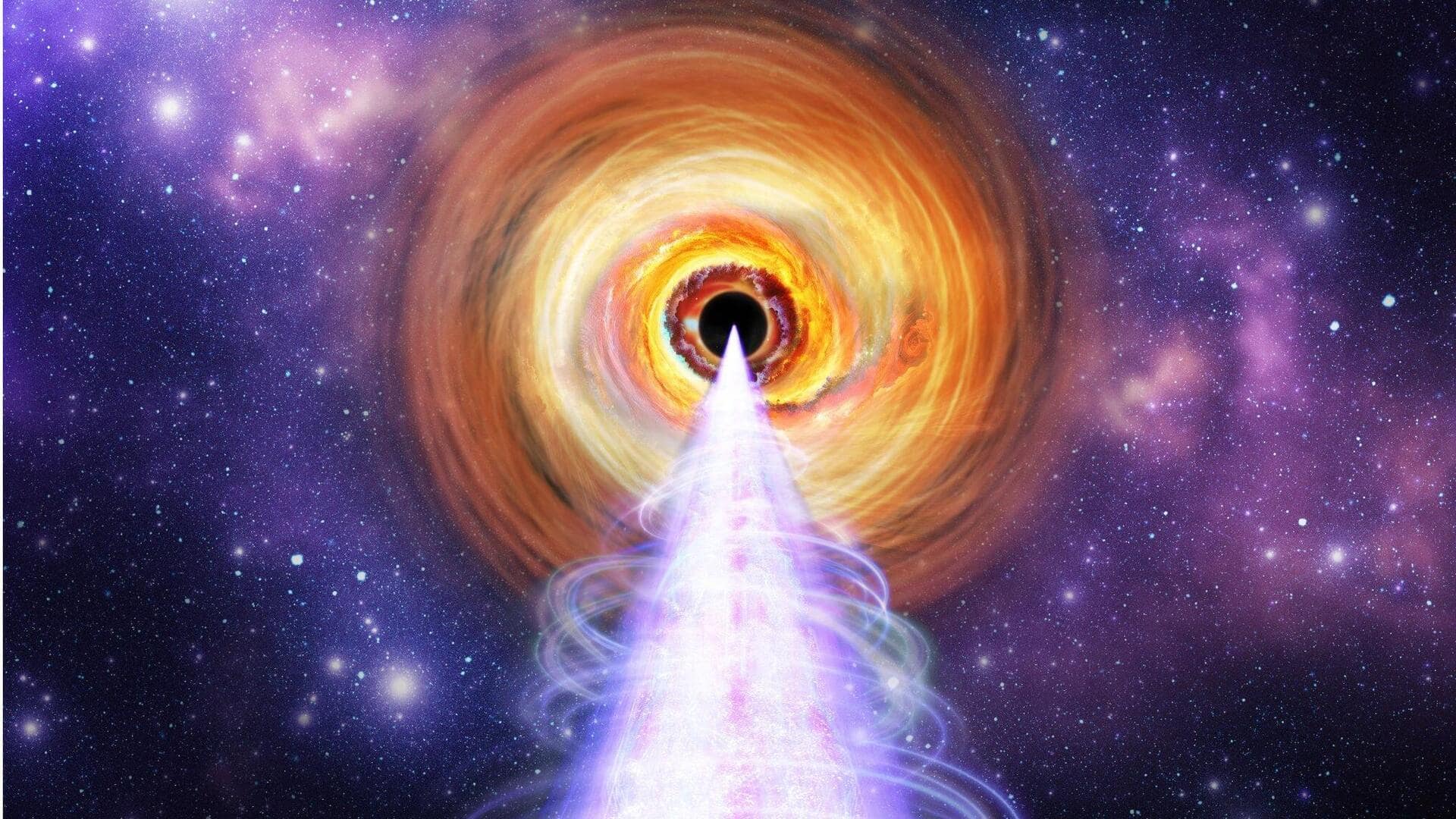
We finally know how X-rays are generated in black holes
What's the story
NASA's Imaging X-ray Polarimetry Explorer (IXPE) has answered a decades-old scientific question: where do X-rays come from in extreme environments such as black holes?
The study focused on the blazar BL Lacertae, a supermassive black hole with a bright disk and jets directed at Earth.
By teaming up with radio and optical telescopes, IXPE has offered new insights into this cosmic phenomenon.
IXPE's role
IXPE's unique capabilities to measure X-ray polarization
Launched on December 9, 2021, IXPE is the only satellite in the world capable of measuring X-ray polarization.
The research team had two competing theories for the origin of these X-rays: one involving protons and the other electrons.
Each theory predicted a different pattern in the polarization of X-ray light, a property that describes the average direction of electromagnetic waves that make up light.
Electron role
IXPE's findings point to electrons
Ultimately, the research team concluded that electrons are responsible for the X-rays, through a process known as Compton Scattering.
This happens when a photon gains or loses energy after interacting with a charged particle, usually an electron.
In supermassive black hole jets, electrons travel at nearly the speed of light and have enough energy to scatter infrared photons into X-ray wavelengths.
Blazar study
Observations of blazar BL Lacertae
IXPE observed BL Lacertae for seven days in late November 2023, along with a number of ground-based telescopes measuring optical and radio polarization simultaneously.
During these X-ray polarization observations, the optical polarization of BL Lacertae peaked at an unprecedented high: 47.5%.
Not only was this the highest level of polarization seen in this blazar in three decades, but also for any blazar ever observed.
Confirmation
Confirmation of theory
IXPE discovered that the X-rays were much less polarized than the optical light, concluding that they cannot be more polarized than 7.6%. This confirmed that the X-rays are generated by electrons interacting with photons through Compton scattering.